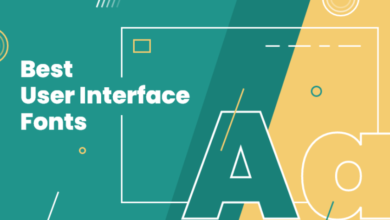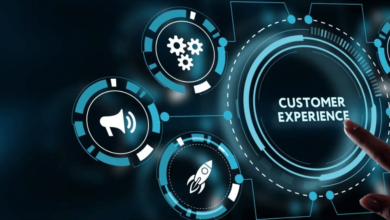How Design Thinking Encourages Innovation in Enterprises

When Airbnb was on the verge of collapse, what saved them wasn’t a marketing push or financial strategy—it was design thinking. By asking a simple yet powerful question, “What’s stopping users from booking?” they discovered that better photos of properties could transform user trust.
This human-centered approach turned their struggling startup into a into a billion-dollar enterprise.
So, how do enterprises like yours unlock similar breakthroughs? What if innovation wasn’t about chasing trends but about deeply understanding your customers’ pain points? This is where design thinking comes in—a method that turns insights into impactful solutions and drives meaningful change.
What is Design Thinking?
The success stories of companies like Airbnb beg the question: what exactly is design thinking, and why does it work?
At its core, design thinking is a problem-solving framework that prioritizes empathy, creativity, and iteration. Unlike traditional methods that focus on data or processes first, design thinking begins with understanding people—their needs, challenges, and desires.
Here’s what makes design thinking stand out:
- Empathy-Driven Approach: Start by understanding your users’ perspectives and real-world challenges.
- Iterative Process: It’s about experimenting, learning from failures, and refining solutions continuously.
- Collaboration at its Core: Involves cross-functional teams to generate diverse ideas and solutions.
- Human-Centric Solutions: Focuses on creating outcomes that genuinely improve the user experience.
- Bias Toward Action: Encourages rapid prototyping and testing to bring ideas to life.
Whether you’re redefining customer experiences or optimizing internal workflows, design thinking services provides a structured yet flexible way to tackle complex challenges by keeping the human perspective at the forefront.
How Design Thinking Sparks Innovation in Enterprises
1. Empathy: Understanding the Human Element
Innovation begins with understanding the people behind the problem—your customers, employees, or stakeholders. Design thinking shifts the focus from assumptions to real insights about human behavior and needs.
What it looks like:
- Conducting in-depth interviews to uncover emotional and practical pain points.
- Observing user behavior in their natural environment to identify hidden challenges.
- Organizing focus groups to gather diverse perspectives and feedback.
Why it matters: When you understand your users at a deeper level, your solutions resonate emotionally and practically, leading to higher adoption and satisfaction.
For example, you’re designing a mobile banking app. Instead of assuming users want more features, you spend a day observing them as they manage finances. You see a parent juggling two kids while struggling to transfer money or an elderly person squinting to read small text. Suddenly, it’s clear: what they need isn’t complexity but simplicity and accessibility.
2. Collaboration: Breaking Down Silos
Innovation rarely thrives in isolation. Design thinking brings together teams across functions to share ideas, insights, and expertise, creating a more comprehensive approach to problem-solving.
What it looks like:
- Hosting cross-functional workshops to align teams like marketing, product, and engineering.
- Brainstorming sessions with diverse participants, including end-users.
- Co-creation activities that involve stakeholders in refining solutions.
Why it matters: Collaboration ensures solutions are practical, aligned with business goals, and enriched by diverse perspectives.
Example: Imagine a workshop where marketing, IT, and product teams come together in a room filled with sticky notes, wireframes, and snack-filled tables. A marketer highlights customer complaints, the tech team points out backend limitations, and a product manager suggests a middle ground. By the end, everyone is aligned on a realistic, user-first solution.
3. Ideation: Thinking Beyond the Obvious
Design thinking creates a safe space for teams to explore unconventional ideas that might otherwise be dismissed.
What it looks like:
- Hosting no-judgment brainstorming sessions where even “wild” ideas are encouraged.
- Using techniques like mind mapping to visually connect ideas and uncover new possibilities.
- Prioritizing ideas based on impact, feasibility, and alignment with goals.
Why it matters: Ideation challenges assumptions and sparks creative breakthroughs that disrupt the status quo.
Example: Now, imagine sitting in a room with a pile of Legos, sticky notes, and random objects. Instead of talking about a problem, you’re tasked with building a physical model of it. A logistics team might create a Lego model of a delivery truck, while someone else builds a drone prototype using tape and cardboard. It sounds playful, but it helps uncover solutions like “Why don’t we add modular delivery options instead of just faster trucks?”
4. Prototyping: Testing Ideas Quickly and Effectively
Prototyping helps enterprises test ideas in real-world conditions without committing significant resources upfront.
What it looks like:
- Building low-fidelity models like wireframes, sketches, or mockups.
- Running small-scale pilot programs to evaluate feasibility and user response.
- Gathering immediate feedback to identify strengths and areas for improvement.
Why it matters: Prototyping enables teams to “fail fast,” refine ideas, and minimize the risk of large-scale failures.
Example: Picture a team using a roll of butcher paper to sketch a rough layout of a retail store. They cut out paper “shelves,” stick on mock products, and role-play as customers walking through the aisles. Within an hour, they’ve tested three different layouts and identified one that makes navigation easier.
5. Iteration: Learning and Adapting Continuously
Design thinking emphasizes iteration as a continuous loop of improvement rather than a one-time effort.
What it looks like:
- Collecting user feedback after each iteration to evaluate performance.
- Analyzing metrics like conversion rates, engagement, or operational efficiency.
- Refining solutions based on real-world data and evolving user needs.
Why it matters: Iteration ensures solutions stay relevant and adaptable, especially in dynamic industries.
Example: Imagine launching a beta version of a new fitness app. Early users report that the calorie tracker is hard to use. Instead of scrapping the feature, the team releases small updates weekly—adding voice input one week and simplifying the interface the next. After three months of iteration, the app boasts a 20% increase in daily active users.
Why Design Thinking Works for Enterprises
Design thinking is more than a framework; it’s a catalyst for aligning creativity with business impact.
- Aligns innovation with business goals: Solutions are built on real user needs, ensuring measurable value for both users and the enterprise.
- Fosters a culture of creativity: Employees are encouraged to think boldly and take ownership of innovation.
- Minimizes risks: Prototyping and iteration reduce the likelihood of costly failures and ensure market readiness.
Time to Rethink Your Approach to Innovation
By placing people at the center and combining creativity with practicality, design thinking empowers enterprises to uncover opportunities that others miss.
Think about the last time your team tackled a complex problem. Did you approach it with a checklist, or did you dig deeper to understand the root cause?
Now, ask yourself:
- Are your current solutions truly solving the right problems, or just addressing symptoms?
- When was the last time you invited your customers, employees, or cross-functional teams into your problem-solving process?
- Do your innovations reflect what users actually need—or what you assume they want?
If these questions make you pause, it might be time to rethink your approach to innovation. Design thinking isn’t just a tool; it’s a way of working that challenges you to explore, test, and adapt like never before. It’s about transforming insights into action and making every solution count.
So, here’s your challenge: What’s one issue your enterprise is currently facing that you could tackle using design thinking services? Start small, involve your team, and see how a shift in perspective can lead to breakthroughs you didn’t think were possible.
Ready to give it a try?



